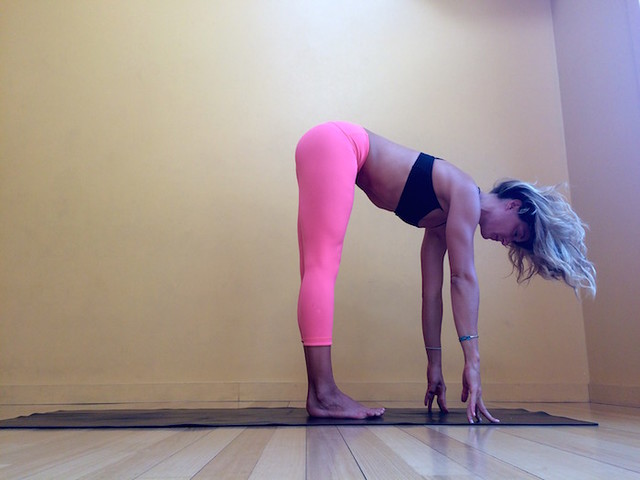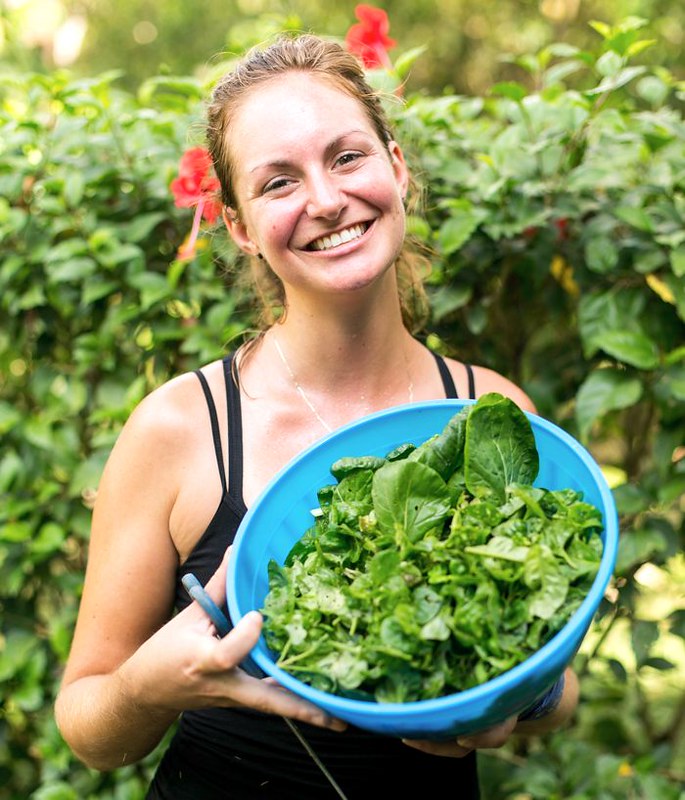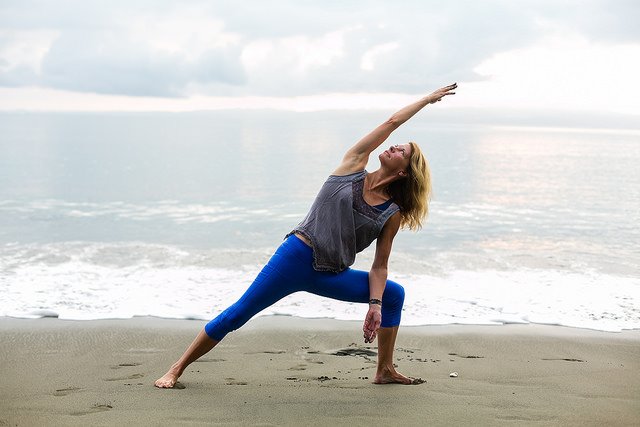OK, I lied. I DO wash my hair but not as often as many of you do. I tend to wash my hair once every 1-2 weeks, which is not that often considering most take part in a daily washing ritual. When I tell people that I don’t wash (my hair) as regularly as most, I am often a witness to faces of shock and horror. Truth be told, I don’t NEED to wash my hair that often and neither do you.
I Don’t Wash My Hair – And You Shouldn’t Either
When we strip down to the bare essentials, it’s important to step back and remember what exactly we’re taking care of when we “shampoo” our hair. An essential component is scalp maintenance. It’s important to massage the scalp and make sure it stays in a (generally) healthy state. The hair on our head protects the scalp, and when we continually wash it, it prevents our hair from doing its natural thing. Germs, dirt and bacteria are going to build up in our hair but luckily we have these incredible systems within ourselves that can ward off any harm and general ickiness.
So why should you ditch your shampoo and opt for a more natural approach? Read on to find out.
Out with shampoo and in with health

Leaving shampoo out of your daily cleansing schedule will create more moisture and oily goodness for your beautiful head. When we continuously wash with shampoo we strip our precious strands of natural oils, drying our hair out and leaving us with flat, dull hair. If you want to create more shine and natural volume, rinsing your hair out with water and then applying a little coconut oil after is a great and natural way to maintain the vitality of your locks. I either massage my scalp with a tiny dose of coconut oil and rinse OR I rinse with water and then take a tiny dab and massage it into my hair, not rinsing it out and allowing it to dry naturally. Use with caution, though. If you use too much coconut oil it will leave your hair a greasy, matted mess, which is unsightly and will hinder your confidence.
Not into the mass exploitation of coconuts? No problem! You can also easily “wash” your hair by generously rubbing your scalp whilst in the shower. As you do this it removes any residual build up using water and friction. It’s the same idea if you are in the bathroom and you find yourself without soap, simply rub your hands together with water to create friction. This friction creates heat, thus destroying any harmful bacteria that may be enticed to enter. Water alone will not get rid of all the germs because the skin naturally creates oil that water can’t eliminate. However, a combination of water and friction can indeed remove some of the germs in a pinch. Don’t worry, I’m not suggesting you eschew soap altogether… that’s for another article.
Time, money and space saver

I don’t know about you, but when I used to wash my hair it was a process. ESPECIALLY if you followed the directions on the label, “lather, rinse, repeat.” Not only was I shampooing my hair twice (sometimes three times just because I was having fun with the suds) but then I was following up with the conditioner that I let sit in my hair for at least 3-5 minutes (yes, I am a stickler for directions in order to achieve optimal results). When I quit this maddening process, my showers were much faster thus allowing me more time to accomplish things in the morning and get on with my day.
Not only does not shampooing save on time, but it also saves money. Now, if you are to shampoo your hair I would hope that you would be using one that is paraben free, all natural and free of dyes. Choosing a shampoo that is organic and non-toxic is of extreme importance because you want only the best for your luscious locks. With that said, those fancy schmancy shampoos can cost anywhere of up to $40 and when you factor in the number of times you wash your hair, the cost of shampoo can exceed well over $100 a month making that over $1,000 annually. Replacing your shampoo practice with, well not, can save you over thousands of dollars in a lifetime.
Also, if you tend to travel a lot those big, bulky bottles of shampoo will no longer be taking up precious space in your luggage. Instead, you’ll have more room for important things such as your hula hoop and hair dryer.
Environmentally friendly

When we opt to forgo using shampoo, it’s a great step towards helping the environment as well. Like mentioned above, the amount of time it takes for the entire shampooing process can take at least 5 minutes. Depending on when your house was built and its water pressure, you could be expending up to 2.5 gallons per minute , which is 12.5 gallons in just 5 minutes! If we bring more mindfulness to our showering practices, we can be saving that water and contributing less to our carbon footprint.
However, water isn’t the only winner in this scenario. Think of the plastic we use every time a bottle of shampoo is purchased. Stores have been getting very creative in selling some of their merchandise in bulk quantity, so that all you need to do is go to the store and bring your own reusable container, fill it up and head home. These reusable systems we have in place are a great way in reducing the amount of packaging and plastic we consume. Unfortunately, there’s no such system for our shampoo. In turn, we end up using an exorbitant amount of plastic on shampoo products alone. Let’s face it, plastic use is out of control. According to a Green Peace report, the world produces over 260 million tons of plastic and of that, about 10% goes out to sea. In Los Angeles alone, 10 metric tons of plastic debris are carried off to the Pacific ocean EVERY DAY , reported the center for Biological Diversity. I understand that eliminating shampoo bottles isn’t going to change that statistic overnight, but with every step we take a small difference is made. And to end on a super cliché note, the Dalai Lama said, “If you think you are too small to make a difference, try sleeping with a mosquito.”
Is this really for you?

Maybe not. Maybe sacrificing your hair washing ritual is all too much and you’re too attached with the flowery scents your hair is drenched in after a nice, cleansing wash. However, in the words of Harry Styles, “don’t knock it till you try it.” Instead of washing your hair every day, try every other day or a few times a week as opposed to four. See how it feels, and if you don’t like your do’ without the ‘poo, then chalk it up to a new experience and move on.
About The Author

Tara DeAugustine is an elementary school teacher, presently taking a much-needed break from teaching, and in turn dabbling in and out of different job roles. Her travels have taken her all over the world, previously living in Thailand, Taiwan and Cambodia. Currently, she’s a volunteer writer and yoga instructor at Blue Osa Yoga Retreat & Spa in Costa Rica. When she’s not busy at work, you can find her doing what she loves, which is included but not limited to: lazing about in hammocks, eating salad, watching sunsets and reading.







